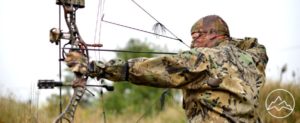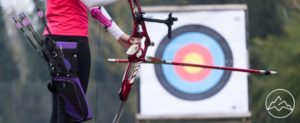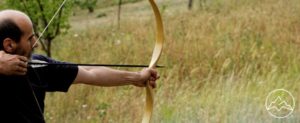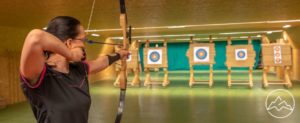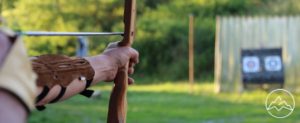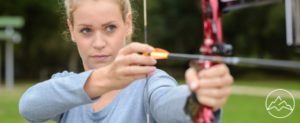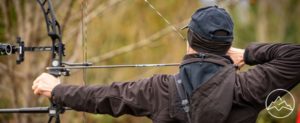In the world of archery, there is an ominous threat that plagues both novice and experienced archers alike: bow string slap. This insidious injury, characterized by red marks, bruises, and scars, not only hampers an archer’s accuracy but also sends arrows astray. It is a relentless foe, lurking in the shadows, waiting to pounce on those who dare to wield the bow. However, fear not, for there is a way to conquer this nemesis and emerge unscathed. In this article, we will delve into the realm of prevention and treatment tips for avoiding bow string slap. By mastering the art of proper technique, such as relaxing the grip, rotating the elbow correctly, and adjusting the stance, archers can banish the specter of string slap. Additionally, we will explore the wonders of the R.I.C.E. method and the therapeutic benefits of heat and aloe vera. So, prepare yourself, dear archer, for a journey of knowledge and empowerment as we unravel the secrets of avoiding bow string slap.
Key Takeaways
- Proper technique, including relaxing the grip, rotating the elbow correctly, and adjusting the stance, can prevent bow string slap.
- The R.I.C.E. method, heat application, and aloe vera can be used to treat bow string slap.
- Maintaining a relaxed grip, correct elbow rotation, open stance, and appropriate draw length can help prevent bow string slap.
- Developing upper body strength and using proper equipment setup, such as adjusting brace height and using an arm guard, are important in preventing string slap.
Preventing Bow String Slap
To prevent bow string slap, it is important for archers to maintain a relaxed grip, ensure correct elbow rotation, adjust their stance, use the appropriate draw length, and develop adequate upper body strength. A relaxed grip allows the archer to settle the bow handle in the lifeline of the hand, forming a 45° angle with the knuckles. Correct elbow rotation keeps the arm out of the string’s path, reducing the risk of string slap. Adjusting the stance to an open position changes the angle between the arm and the bowstring, decreasing the chances of string slap. It is crucial to choose the appropriate draw length, as using one that is too long increases the risk of string slap and affects shooting accuracy. Developing upper body strength is essential for controlling the bow and maintaining balance. Additionally, proper equipment setup, such as adjusting the brace height and using an arm guard, can further help prevent string slap. Archers can also benefit from specific exercises that target the muscles used in archery, such as shoulder exercises and resistance training.
Correcting Technique
Improving archery technique involves ensuring proper positioning of hands, shoulders, elbows, and feet, as well as correct setup of archery equipment. To avoid bow string slap, it is crucial to correct grip and improve elbow rotation.
- Correcting grip: Archers should settle the bow handle in the lifeline of their hand and form a 45° angle with their knuckles. This proper grip helps in maintaining control over the bow and reduces the chances of string slap.
- Improving elbow rotation: It is important to rotate the elbow correctly to keep the arm out of the string’s path. This prevents the bow string from hitting the forearm and causing injuries. By practicing proper elbow rotation, archers can significantly minimize the risk of bow string slap and improve shooting accuracy.
By focusing on these two aspects of technique, archers can enhance their form and reduce the likelihood of experiencing bow string slap.
Treating the Injury
Archers who fall victim to the sting of the bow’s unforgiving touch find themselves in the realm of rehabilitation, seeking solace for their bruised and scarred flesh. When it comes to treating the injury caused by bow string slap, there are a few methods that can be employed. Applying heat to the affected area can be beneficial the day after the injury occurs. Heat helps boost blood circulation, promoting muscle relaxation and tissue healing. This can be done through the use of warm compresses or taking warm showers. Additionally, aloe vera can be applied topically to reduce inflammation and alleviate pain caused by the string slap. Aloe vera’s natural anti-inflammatory properties can provide relief and aid in the healing process. However, it is important to consult with a healthcare professional for proper guidance and treatment of the injury.
Frequently Asked Questions
How long does it typically take for a bow string slap injury to heal?
The recovery time for a bow string slap injury can vary depending on the severity of the injury and the individual’s healing process. Generally, it can take anywhere from a few days to a couple of weeks for the injury to heal completely. Effective treatments for bow string slap include following the R.I.C.E. method (Rest, Ice, Compress, Elevate), applying heat the next day to boost blood circulation, and using topical aloe vera to reduce inflammation and pain.
Are there any exercises or stretches that can help prevent bow string slap?
Exercises and stretches can play a crucial role in preventing bow string slap. For example, incorporating shoulder and forearm stretches into a regular warm-up routine can help improve flexibility and reduce the risk of injury. Additionally, exercises that target upper body strength, such as resistance training and push-ups, can enhance control over the bow and minimize the chances of string slap. Treatment options for bow string slap include resting the affected area, applying ice to reduce swelling, and elevating the arm to promote healing.
Can using a wrist sling help prevent bow string slap?
Using a wrist sling can be an effective preventive measure for bow string slap. A wrist sling helps to reduce the chances of string slap by providing support and stability to the bow hand, allowing for a relaxed grip. In addition to using a wrist sling, archers should also focus on other preventive measures such as proper hand positioning, correct elbow rotation, and adjusting their stance. Bow string slap can significantly impact accuracy and performance, as it can cause injuries and deflect arrows off-target. Therefore, it is crucial to take necessary precautions to avoid bow string slap.
Are there any specific types of clothing or gear that can help reduce the risk of bow string slap?
When it comes to reducing the risk of bow string slap, there are specific types of clothing and gear that can provide protection. Clothing options such as long-sleeved shirts and arm guards can shield the forearm from the impact of the bow string. Additionally, wearing a chest guard can prevent the string from coming into contact with the chest area. Protective gear, such as finger tabs or gloves, can also be used to minimize the risk of injury to the fingers. These clothing and gear options serve as a barrier between the archer’s body and the bow string, reducing the chances of bow string slap.
Are there any alternative treatments or remedies that can help with the pain and inflammation caused by bow string slap?
Alternative treatments and natural remedies can be used to alleviate the pain and inflammation caused by bow string slap. One option is to apply a cold compress to the affected area to reduce swelling and numb the pain. Additionally, natural remedies such as arnica gel or cream can be applied topically to reduce inflammation and promote healing. It is important to consult with a healthcare professional before trying any alternative treatments to ensure they are safe and effective.
Conclusion
In conclusion, preventing bow string slap is essential for archers to maintain accuracy and avoid injuries. By focusing on proper technique, such as relaxing the grip, rotating the elbow correctly, and adjusting the stance, archers can significantly reduce the risk of string slap. Additionally, choosing the right draw length and adjusting the brace height can further prevent injuries. Building upper body strength is crucial for controlling the bow and maintaining balance. In case of string slap, the R.I.C.E. method can be used for treatment, along with applying heat and aloe vera topically for relief. By following these tips, archers can enjoy a safer and more enjoyable archery experience.


